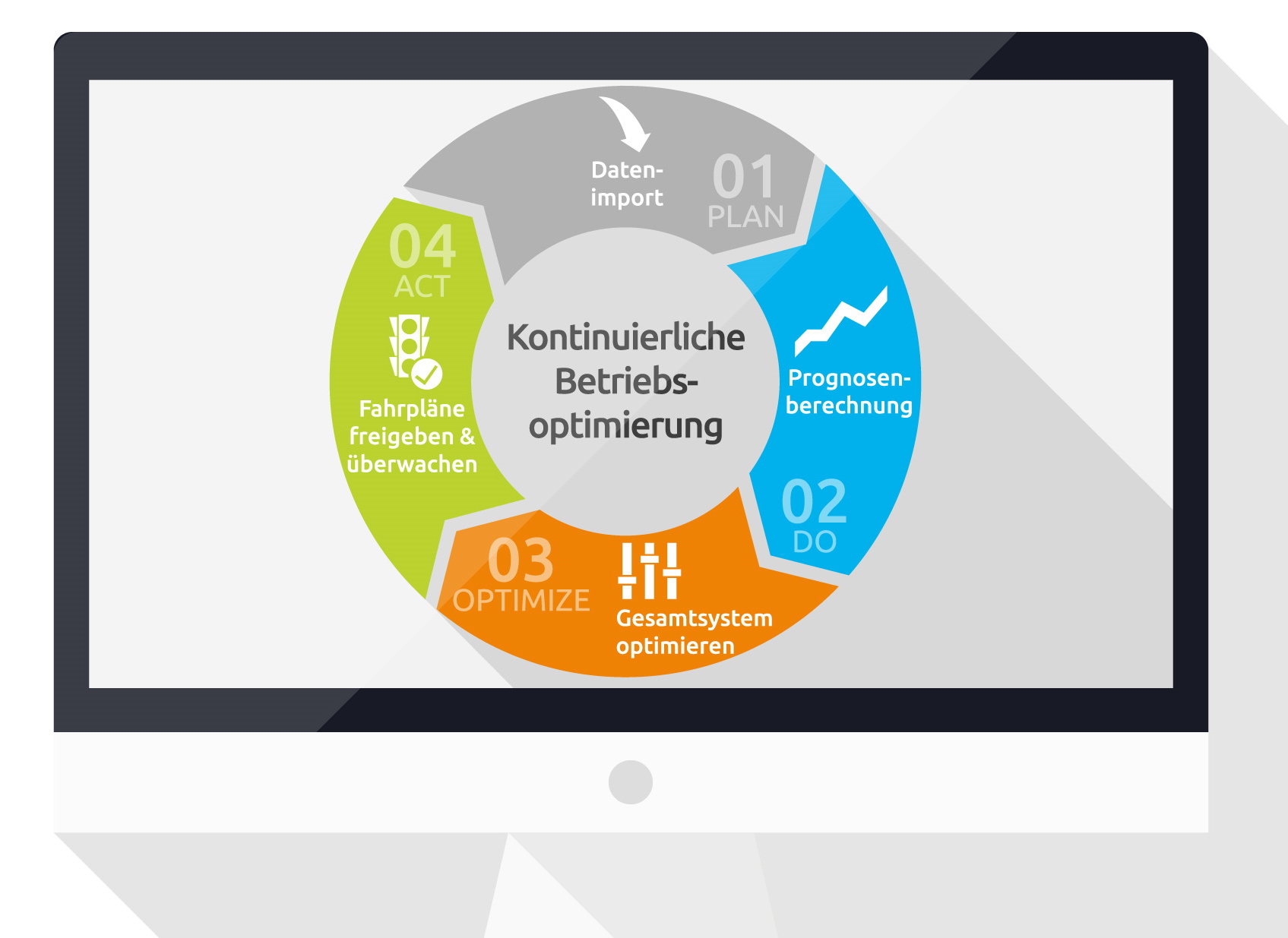This blog post is a summary. The complete article on the continuous operational optimisation approach was published in VIK Mitteilungen, a publication of the Association of the Industrial Energy and Power Industry (VIK). You can download the trade article here:
Challenge: controlling complex energy systems
Up until now, industrial enterprises operated their power plants in such a way that they could cover their energy needs at the lowest possible cost. This is often done without software-supported processes and purely on the basis of the many years of experience of the operating team.
However, many companies have more savings potential in their energy system than they think is possible. For example, if consumers can be controlled, then there are opportunities for load shifting. Heat can be recovered with compressors, and absorption chillers can be used to generate cold from heat, making it possible to increase the running times of CHPs also in the summer months. In general, systems for internal generation of energy, ideally in conjunction with energy storage systems (such as combined heat and power units with hot water storage), are increasingly providing new options for companies to reduce their costs on a lasting basis.
With this growing flexibility, the complexity of the systems and their interactions are also increasing. This results in energy systems whose many degrees of freedom prevent them from being controlled exclusively based on experience. Being able to optimally use and control the many components of an energy system also during the day requires anticipatory energy management, digital processes and a large volume of data.

Improving energy efficiency and taking advantage of flexibility with continuous operational optimisation
So what is an approach that companies can take to solving these challenges of increasing complexity so that they can reduce costs even more? One way to do this is through continuous operational optimisation.
This approach can be described as viewing and optimising the energy system in an integrated and holistic manner. It requires high-resolution data (time series based on 15-minute intervals) for generation, drawing power from the grid and consumption. This information is stored in a central system and combined with forecast data (such as day-ahead consumption forecasts).
The optimisation system can appropriately deal with this complexity. Despite hundreds of variables and degrees of freedom, it can promptly calculate the cost-optimal operating mode for the use of all power plants and systems. Disruptions and sudden changes, such as unplanned failure of a plant or system, fluctuating production utilisation and changing demand for heat and cooling can promptly be taken into consideration. A roadmap calculated according to the current framework conditions is then created. In short, continuous operational optimisation also increases optimisation potential in ongoing operations.
By viewing the energy system from this holistic perspective, companies can actively manage their energy storage systems and optimise their energy procurement strategy in general. That’s because only those who know how flexible they are can also make good use of this flexibility.




0 Comments